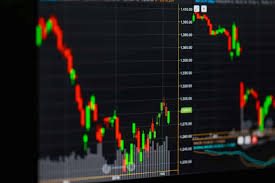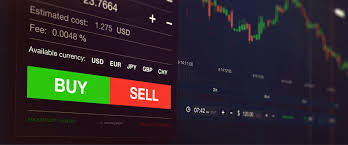
The Ultimate Guide to Forex Trading Signals
Forex trading signals are one of the most vital tools in the arsenal of any successful trader. These signals provide insights on when to enter or exit a trade based on technical analysis, market conditions, and various other factors. If you’re new to forex or looking to refine your trading strategy, understanding these signals can greatly enhance your trading performance. For traders in South Africa, it’s essential to find reliable resources and tools, including forex trading signals Best South African Brokers, to maximize your trading success.
What Are Forex Trading Signals?
Forex trading signals are recommendations or alerts that indicate the ideal buying or selling opportunity in the forex market. These signals can come from a variety of sources, including professional traders, trading software, and signal service providers. The primary purpose of these signals is to help traders make informed decisions and capitalize on market opportunities, thereby maximizing profitability.
Types of Forex Trading Signals
There are two main types of forex trading signals: manual and automated.
Manual Signals
Manual signals are generated by experienced traders or analysts. They often come after careful analysis of economic conditions, price action, and historical data. Traders relying on manual signals usually need to monitor the market and execute trades based on the signals they receive.

Automated Signals
Automated trading signals are produced by trading algorithms and tools. These systems analyze market data in real-time to generate signals automatically. Traders can benefit from these systems as they save time and reduce the emotional aspects of trading. However, it is vital to note that automated signals require thorough testing and proven track records before relying on them for live trading.
How Forex Trading Signals Work
Forex trading signals typically include several key pieces of information:
- Currency Pair: The specific forex pair to trade, e.g., EUR/USD.
- Entry Point: The suggested price level to enter the trade.
- Exit Point: The target price where to exit the trade and take profit.
- Stop-Loss Level: The price level to set a stop-loss order to minimize potential losses.
Traders receive these signals through various channels, including email, SMS, or specialized trading platforms. It is crucial to analyze the signals properly, understand the rationale behind them, and align them with your trading plan before execution.
Benefits of Using Forex Trading Signals

The use of forex trading signals can provide numerous benefits for traders of all levels, including:
- Informed Decision Making: With clear entry and exit points, traders are less likely to make impulsive decisions.
- Expert Insights: Utilizing signals from experienced traders can enhance your trading knowledge.
- Time-saving: Automated signals can help traders save time spent on analysis.
- Risk Management: Clear stop-loss levels provided with signals can help manage risk effectively.
Choosing the Right Forex Trading Signal Service
With the plethora of signal services available, selecting the right one can be overwhelming. Here are some tips to consider:
- Reputation: Look for services with positive reviews and testimonials.
- Transparency: A good service provider should be open about their performance history and the methodology behind the signals.
- Trial Options: Many services offer demo periods or trial options, allowing you to evaluate their effectiveness without commitment.
- Support and Education: Choose a provider that offers support and resources to help you understand the signals better.
Common Mistakes to Avoid When Using Forex Trading Signals
While forex trading signals can be incredibly beneficial, there are common pitfalls that traders often face:
- Over-reliance: Avoid relying solely on signals without developing your trading strategy.
- Ignoring Market Conditions: Always consider broader market conditions and news events that might impact trades.
- Disregarding Risk Management: Even when using signals, risk management should be a priority.
- Neglecting to Analyze Results: Keep track of your signals’ performance, and adapt your strategy as needed.
Conclusion
Forex trading signals can be a powerful ally in your trading journey, providing valuable insights and helping you make informed decisions. However, it is essential to approach these signals with a critical mindset, integrate them into a broader trading strategy, and continuously seek to improve your trading skills. As you explore the world of forex trading, remember the significance of choosing the right tools and resources, including consulting the Best South African Brokers to ensure your success in the forex market.

